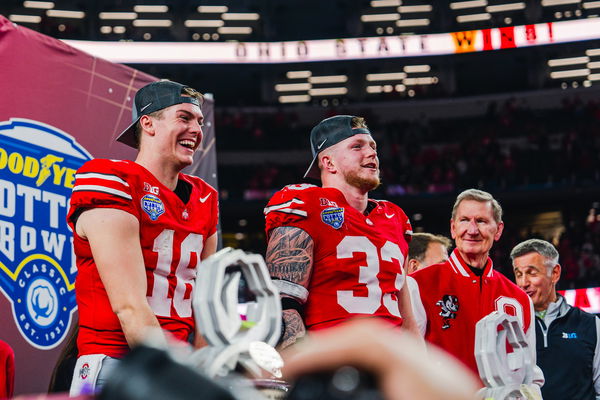

Spending over $20 million on new players, the Ohio State Buckeyes recently achieved their first national championship in 10 years. However, this significant NIL investment is not without risks, including legal uncertainties tied to Title IX compliance and the sustainability of such funding models for long-term success.
Watch What’s Trending Now!
Entering the new millennium, the changes provided by NIL and recent updates to Title IX regulations under Joe Biden’s administration have given the college programs a chance to renovate themselves, giving them a new makeover.
ADVERTISEMENT
Article continues below this ad
Ohio State Buckeyes is entering a new stage
As the NIL landscape grows, legal experts are examining how it fits within Title IX’s gender equity requirements. For instance, Ohio State’s distribution of $20 million in NIL funding raises concerns about compliance with these regulations, especially as NIL compensation was not originally considered when Title IX was drafted. Talking about college sports entering a new revenue-sharing model, Ross Bjork, the Ohio State’s Athletic Director, has expressed his concerns over the possible challenges to be faced along the way.
“It’s too early to predict. How is it going to be broken down from a Title IX standpoint? The challenge is, we’re up against the clock. We’re signing athletes in football in December. We need some clarity sometime this fall.”
ADVERTISEMENT
Article continues below this ad
While college teams now directly distribute revenue to athletes, Ohio State is still working out how to categorize NIL compensation to ensure compliance with Title IX’s gender equity guidelines. The application comes into effect for the students receiving NIL-related compensation and benefits in the revenue areas of athletic financial assistance, publicity, and support services.

ADVERTISEMENT
Article continues below this ad
“We all are going to follow Title IX. It applies to our athletic programs, universities, all of those things. But this is a new pocket of financial aid or compensation, a new bucket that was not contemplated when only financial aid and just grant-in-aids were talked about in the original Title IX legislation. We need a lot of analysis. What does the legal analysis say around this newfound bucket of money?”
The Biden administration’s updated Title IX guidelines have reversed previous changes made under Donald Trump, emphasizing stricter gender equity compliance in areas such as NIL revenue-sharing, financial assistance, and publicity—a shift that adds complexity for college programs like Ohio State balancing their NIL strategies with Title IX mandates. With no focus on commercial profit, the $20 million investment by the Ohio State Buckeyes breaks down the revenue for both male and female athletes.
A look into Ohio State’s $20 million revenue
Defeating Notre Dame in the Monday night match, the Ohio State Buckeyes became the 2025 champions of the College Football Playoff national championship game with a victory of 34-23. Possessing stars like Will Howard and Jeremiah Smith in that $20 million NIL budget, believe it or not, the decision somehow has given them one of the biggest successes.
The $20 million in NIL funding is collected through endorsement deals with Ohio State’s football athletes. To meet Title IX’s requirements, the team is working to ensure a fair distribution, including 91 new scholarships, distributing 58 for women athletes for an additional amount worth $4.5 million. The team, however, thrives to give out the proportionate revenue in two areas, including one comprising both its male and female athletes, and the other part comes from marketing, including factors such as social media and TV viewership confined to sports.

With the emergence of the NIL rule, college athletics programs have been benefiting a great deal, specifically from male athletes’ contracts. This creates a challenging reality for Title IX compliance under the Biden administration, which has emphasized gender equity in revenue distribution and support services. Ohio State’s $20 million NIL strategy highlights this tension, painting a starkly different picture from the equity-focused vision Title IX aims to uphold.
While talking about the overall funding, it’s been found that around twelve of the college teams have gotten their NIL deals that have come under public attention. With $92 million earned from men and $19 million from women, a majority of these deals, roughly 98%, go under the men’s sports program. The women’s programs, on the other hand, hold an advantage, gaining their prominence from brand partnerships.
ADVERTISEMENT
ADVERTISEMENT
ADVERTISEMENT
ADVERTISEMENT


